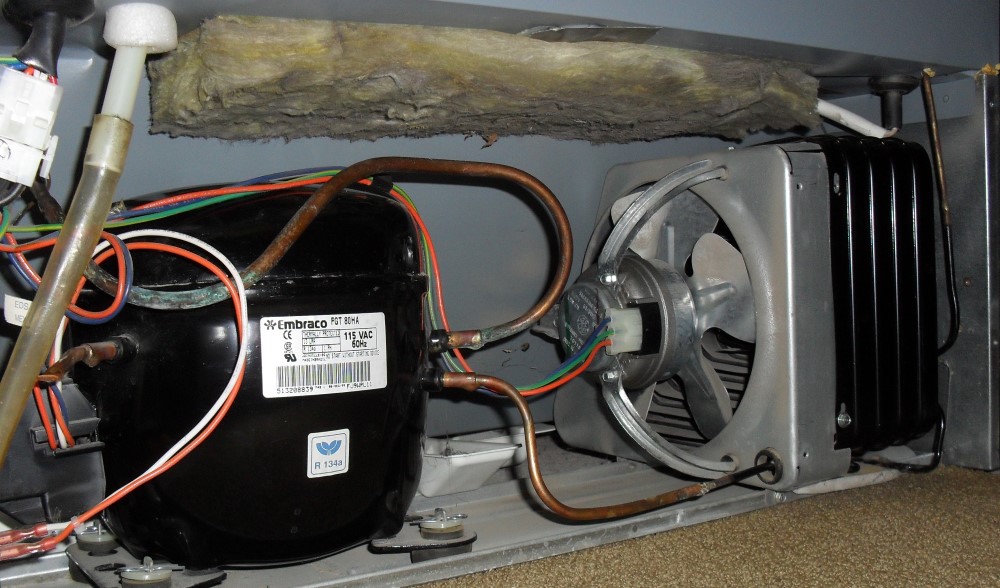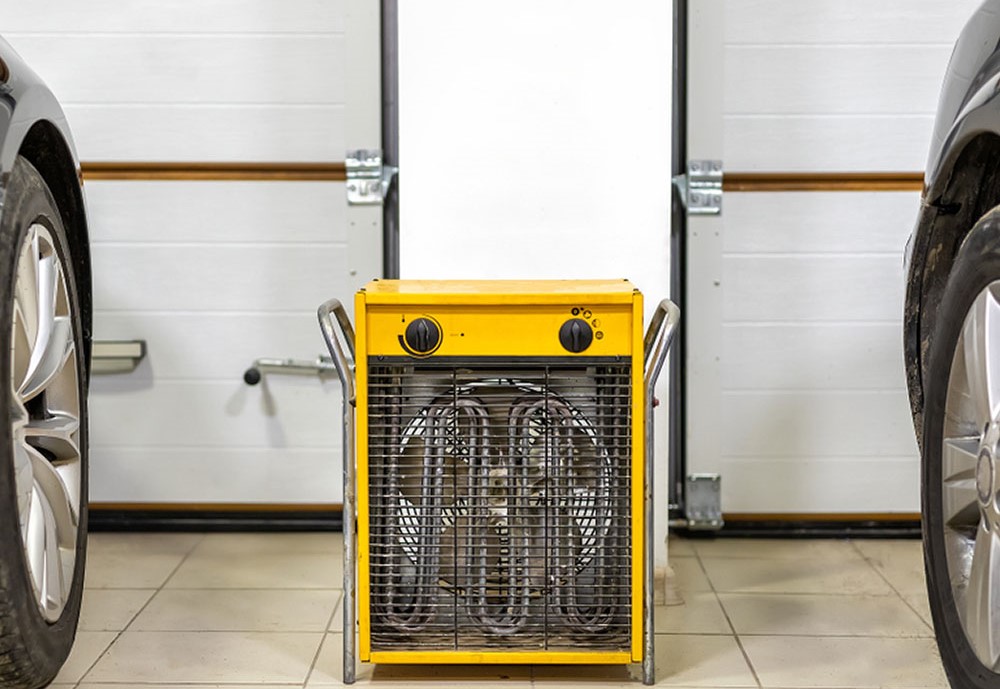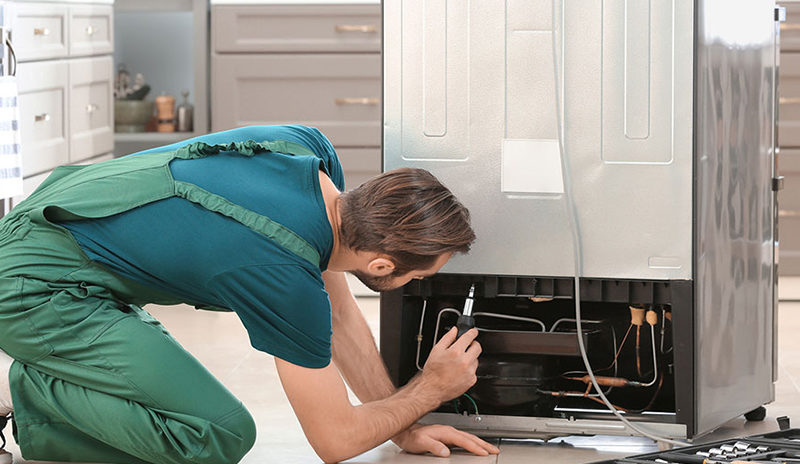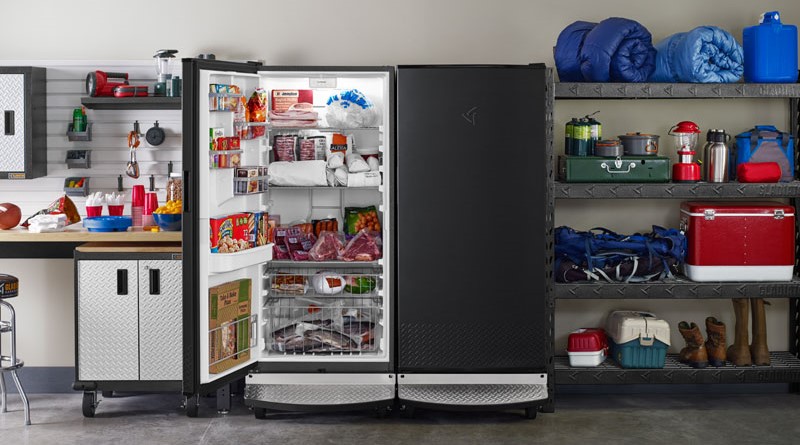Freezers can be very useful when it comes to storing that excess food we may have stuffed into our fridge, however many don’t consider their functionality when placed in an unheated garage. The garage is one of the most popular places to store a freezer, but if placed in an unheated garage, you may run into some issues.
Can you have a freezer in an unheated garage? It is possible to keep a freezer in an unheated garage. However, freezers will begin to face complications when the overall temperature of the garage drops below 50 degrees Fahrenheit. If located somewhere where the general temperature of your garage does drop far below this temperature, then your freezer’s compressor may fail to turn on resulting in the accidental thawing of your freezer’s contents.
There is much more, however, to consider when deciding whether or not your unheated garage is a compatible location for your freezer. Understanding how certain conditions of your garage and its temperature affect your freezer can save a large amount of money in lost frozen goods and repairs in the future.
Table of Contents
Problems with An Unheated Garage

There are typically a few common issues that occur with a freezer located in an unheated garage. With the introduction of potentially drastic changes in temperature to an appliance that wasn’t built specifically for these conditions, your freezer is bound to face some damages.
The Compressor
The compressor is the part of the freezer that is directly responsible for maintaining the freezer’s low temperatures through a process of increasing its internal pressure. When placed in an unheated garage where the temperature outside the freezer is significantly lower than that of the freezer, the compressor runs the risk of not activating as it should.
The extremely low-temperature conditions prevent the compressor from operating properly. In doing so, your food could be failing to meet the required temperature to achieve freezing and thaw as a result. This not only adds additional costs by the potential of needing to replace the compressor but also puts you at risk for possible bacteria growth on your food.
The Insulation
A freezer placed in an unheated garage is constantly facing wavering temperatures and therefore accumulates a build-up of frost in its insulation, which if left unmaintained can be costly damage. As the cold temperatures continue, more frost builds up, reducing the insulation ability to keep out the cold external temperatures. Unfortunately, in most cases, the damage is unrecognizable until much later, meaning it usually isn’t detectable until its time to repair the irreversible damages.
External Heating Units

If your garage’s low temperatures are negatively affecting your freezer, you can always consider investing some money into an external heating unit. The simple addition of an external heating unit can ensure your freezer works properly. An external heating unit, placed directly by the freezer may seem counterintuitive, but it is one way to ensure that your freezer’s compressor maintains its functionality.
By placing an external heating unit directly by your freezer, the freezer’s compressor will be able to detect the warm temperature from outside of it and trigger the compressor to begin cooling the contents of the freezer to their freezing temperature. It is vital, however, to consistently monitor the heat being outputted by the unit in order to ensure it’s countering the wavering temperatures.
For this solution, you want to be sure that:
- There is an available power outlet nearby.
- The external heating unit is of the appropriate size to meet the requirements of your freezer.
- The heating unit is not located too close to any objects that might prove to be a fire hazard.
While this method does require a small upfront investment, it is one guaranteed way to prevent potential future damages and expenses from occurring.
Insulating the Freezer
With the primary issue of outdoor freezers being the extremely low temperatures, another possible option is to create a second layer of insulation for the freezer. If you have access to some wood and insulation, you could simply create an insulated wooden container for the freezer to be placed in.
By surrounding the freezer with a wood and insulation based frame, you can manage to keep more of the extreme temperatures outside the insulated area so the compressor can operate its primary functions. This method does require some further expertise, as you will need to have the knowledge of how to construct a basic box structure from wood and apply a layer of insulation, but its a method definitely worth trying.
You may even consider combining this solution with the previous solution and add an additional heating unit in the insulated area of the temperature still proves to be too low.
For this solution, you want to be sure that:
- Your budget allows you to buy the necessary wood and insulation for the frame.
- Your garage has enough space to house the insulated container and the freezer.
- You properly support the frame before setting the freezer inside of it.
- You properly adhere to the insulation to the wood (Any unfastened piece of insulation will allow more cold temperatures to enter the insulated container).
Switch to An Outdoor Freezer
Depending on where you live, you might not be able to provide your freezer with the precautions it needs to operate properly. However, by switching to an outdoor freezer, you won’t have to worry about external temperature’s negative effects on the appliance.
Although the additional cost might be a negative to some, it will prove to be a very positive investment for both your time and leisure in the future. Outdoor freezers come in an abundance of sizes and fit various food-keeping needs.
Best of all, you won’t have to worry about:
However, this solution doesn’t come with its share of negatives. The main negative for this solution is that most outdoor freezers, while protected against harsh temperature conditions, aren’t waterproof for wet weather conditions. This could potentially open the door to further damages if not accounted for when deciding the placement of the freezer in the garage.
With all this in mind, this method still provides the clearest, low maintenance solution to the problem
Freezer Maintenance

Let’s say you already have a freezer that doesn’t meet the requirements for extreme outdoor conditions. Although not the best option, you could choose to maintain and repair any damages to your already existing freezer.
Maintenance of the freezer includes:
- Removing frost accumulated within the insulation periodically.
- Adjusting and eventually replacing the damaged compressor and its components.
- Periodic evaluation and adjustment of the freezer’s parts.
Some general understanding of how your freezer functions will be required if you attempt to repair it. Additional tools and parts will be required, not accounting for the time it will take you to gather these parts and apply them to the repair.
Keep in mind that this solution is not suggested as a long term solution as it is highly unsustainable and very time-consuming. It is less of a solution and more of a temporary band-aid to a bigger problem, as the freezer will eventually become nonfunctional.
While taxing on time and effort, this method will definitely save you money in the short term, but not as much in the long term. This method is a decent way to make your current freezer last until the purchase of an outdoor freezer. It is possible to have a freezer in an unheated garage, but it is definitely not recommended.
Image Credits: garageappeal.com / sd-appliancerepair.com / iwae.com



0 Comments